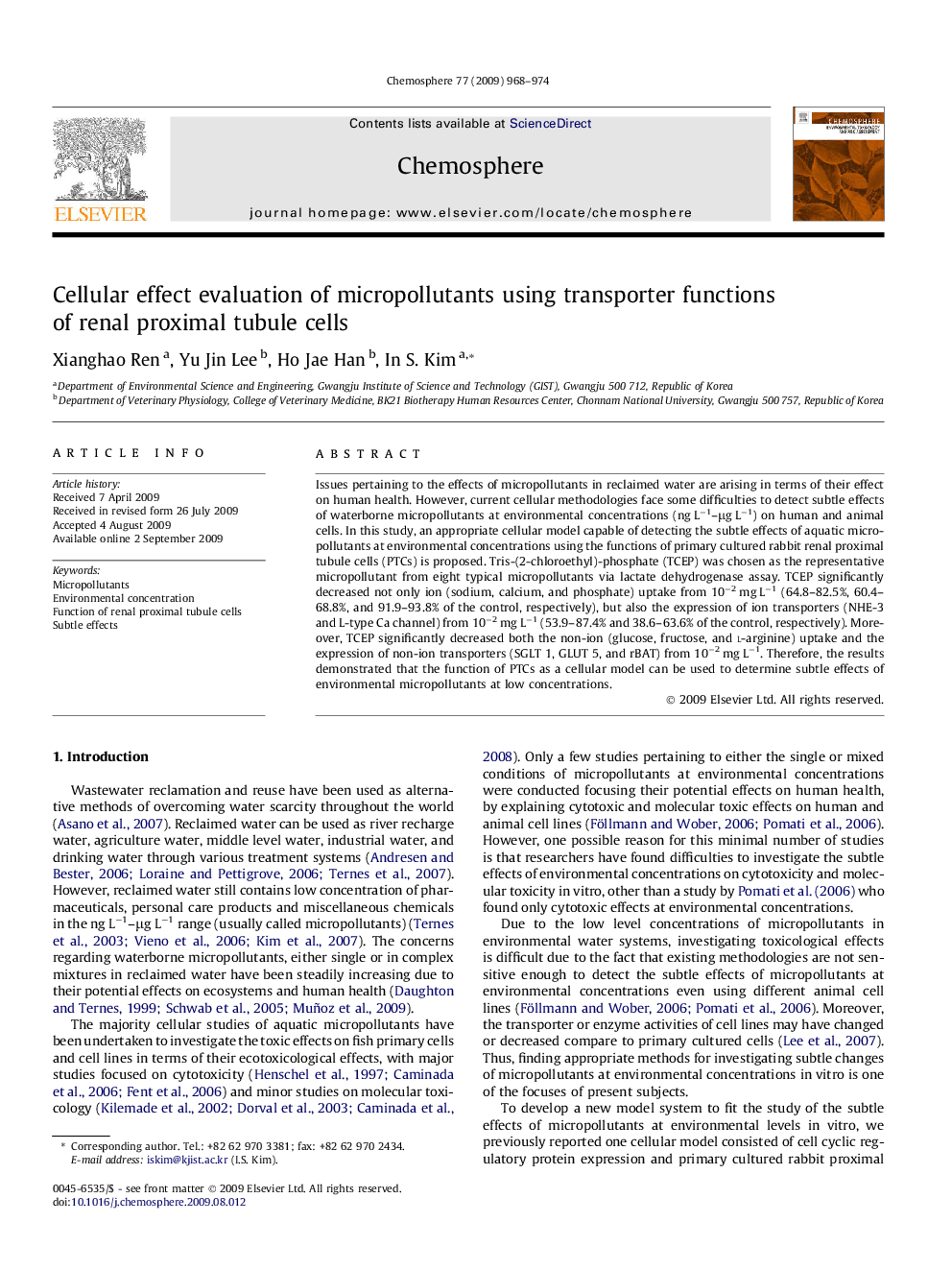| کد مقاله | کد نشریه | سال انتشار | مقاله انگلیسی | نسخه تمام متن |
|---|---|---|---|---|
| 4412441 | 1307638 | 2009 | 7 صفحه PDF | دانلود رایگان |

Issues pertaining to the effects of micropollutants in reclaimed water are arising in terms of their effect on human health. However, current cellular methodologies face some difficulties to detect subtle effects of waterborne micropollutants at environmental concentrations (ng L−1–μg L−1) on human and animal cells. In this study, an appropriate cellular model capable of detecting the subtle effects of aquatic micropollutants at environmental concentrations using the functions of primary cultured rabbit renal proximal tubule cells (PTCs) is proposed. Tris-(2-chloroethyl)-phosphate (TCEP) was chosen as the representative micropollutant from eight typical micropollutants via lactate dehydrogenase assay. TCEP significantly decreased not only ion (sodium, calcium, and phosphate) uptake from 10−2 mg L−1 (64.8–82.5%, 60.4–68.8%, and 91.9–93.8% of the control, respectively), but also the expression of ion transporters (NHE-3 and L-type Ca channel) from 10−2 mg L−1 (53.9–87.4% and 38.6–63.6% of the control, respectively). Moreover, TCEP significantly decreased both the non-ion (glucose, fructose, and l-arginine) uptake and the expression of non-ion transporters (SGLT 1, GLUT 5, and rBAT) from 10−2 mg L−1. Therefore, the results demonstrated that the function of PTCs as a cellular model can be used to determine subtle effects of environmental micropollutants at low concentrations.
Journal: Chemosphere - Volume 77, Issue 7, November 2009, Pages 968–974